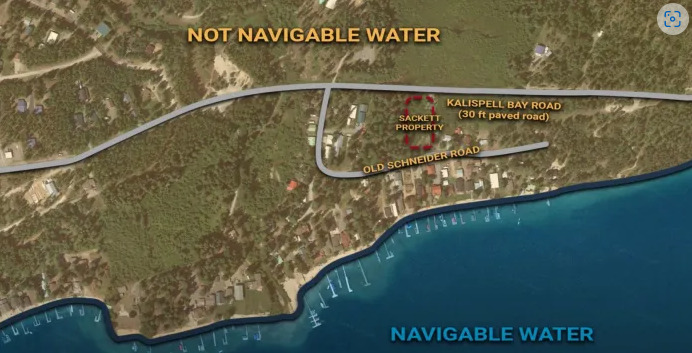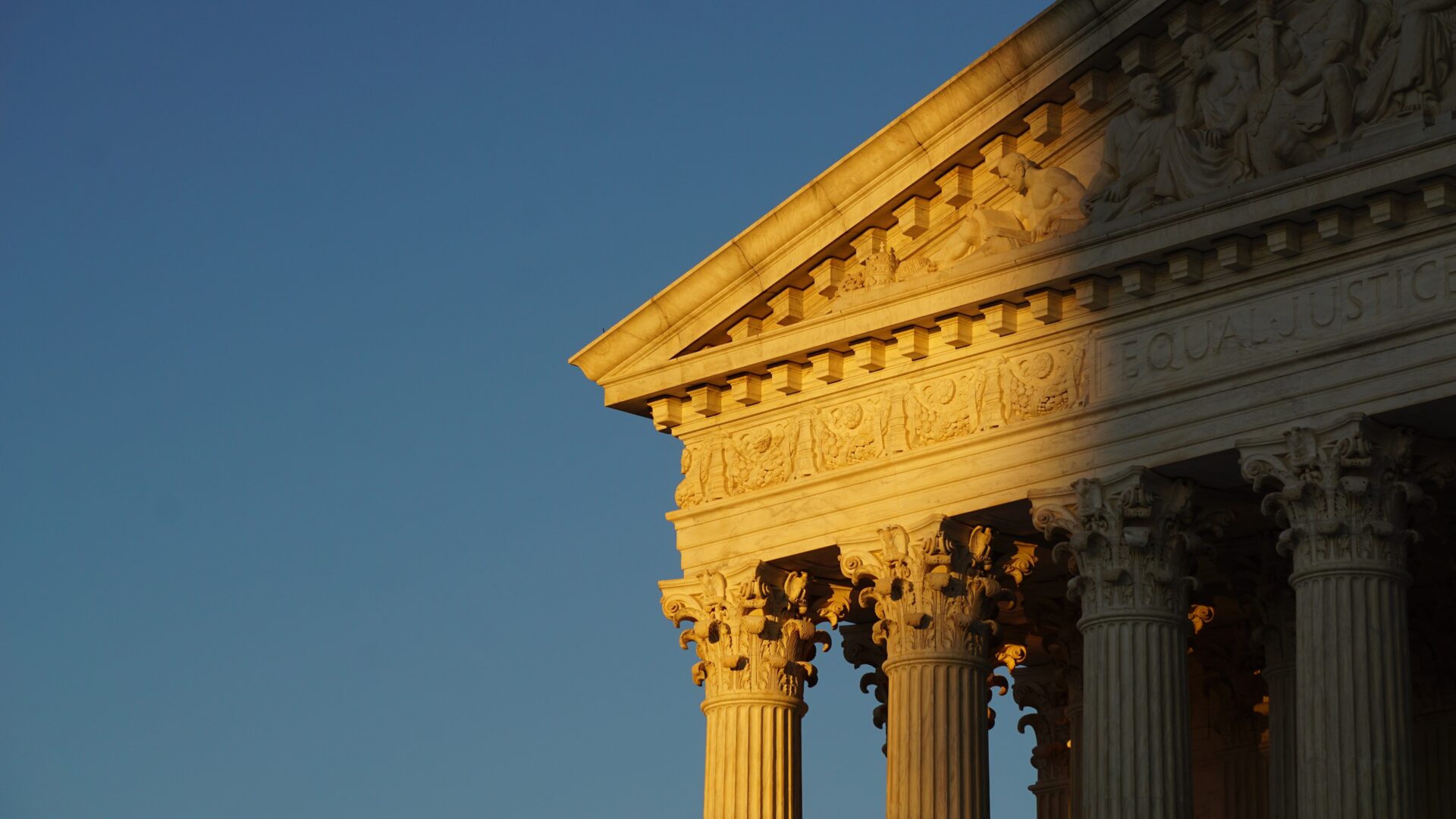The Supreme Court’s Decision on Sackett and What That Means for the Yuba Watershed
In a significant ruling on May 25, 2023, the Supreme Court delivered a decision that carries profound implications for the Clean Water Act, the landmark water pollution law. The Court concluded that the property owned by an Idaho couple does not fall within the scope of wetlands that are subject to federal oversight under the law. “The basis for the decision is that because the wetlands do not have a continuous surface connection to waters of the United States, the Clean Water Act does not apply. This is especially damaging because we know wetlands, rivers, streams, lakes, and the ocean are all inextricably connected. Sometimes that connection is through surface water, sometimes groundwater. Pollution in a temporarily disconnected wetland will inevitably makes its way into waters of the United States which are protected under the Clean Water Act.” said Aaron Zettler-Mann, SYRCL’s interim Director and Watershed Science Director.


For background, the Supreme Court Syllabus on this ruling says the following:
“In the early 2000s, Michael and Chantell Sackett purchased property near Priest Lake, Idaho and began backfilling the lot with dirt to prepare for building a home. The Environmental Protection Agency (EPA) informed the Sacketts that their property contained wetlands and that their backfilling violated the Clean Water Act (CWA), which prohibits discharging pollutants into ‘the waters of the United States.’ The EPA ordered the Sacketts to restore the site, threatening penalties of over $40,000 per day. The EPA classified the wetlands on the Sacketts’ lot as ‘waters of the United States’ because they were near a ditch that fed into a creek, which fed into Priest Lake, a navigable, intrastate lake. The Sacketts sued, alleging that their property was not ‘waters of the United States.’ The District Court entered summary judgment for the EPA. The Ninth Circuit affirmed, holding that the CWA covers wetlands with an ecologically significant nexus to traditional navigable waters and that the Sacketts’ wetlands satisfy that standard.
The CWA’s use of ‘waters’ in §1362(7) refers only to ‘geographic[al] features that are described in ordinary parlance as ‘streams, oceans, rivers, and lakes’ and to adjacent wetlands that are ‘indistinguishable’ from those bodies of water due to a continuous surface connection. Rapanos v. United States, 547 U. S. 715, 755, 742, 739 (plurality opinion). To assert jurisdiction over an adjacent wetland under the CWA, a party must establish ‘first, that the adjacent [body of water constitutes] . . . ‘water[s] of the United States’ (i.e., a relatively permanent body of water connected to traditional interstate navigable waters); and second, that the wetland has a continuous surface connection with that water, making it difficult to determine where the ‘water’ ends and the ‘wetland’ begins.’”
The uncertain meaning of “the waters of the United States” has been a persistent problem, sparking decades of agency action and litigation.
On Thursday, May 25, the Supreme Court overturned both the District Court and the Ninth Circuit decisions and ruled that the Sackett’s property does not include wetlands subject to federal oversight under the law.
The impact of this decision will be felt throughout the nation as millions of acres of wetlands will no longer be under federal jurisdiction. A statement from the Waterkeeper Alliance reads, “This decision significantly narrows the range of waters that the CWA protects, and opens the door for thousands of damaging projects to move forward without any water quality protections. Without these essential legal protections, wetlands, rivers, and lakes across the country – and the communities who depend on them – are now much more vulnerable to industry pollution and destruction.”
“In the Yuba Watershed, where many waterways are ephemeral (meaning there is only surface water part of the year), this ruling could allow increased degradation of sensitive wetland and riparian habitats that are invaluable to humans and other species,” says Alecia Weisman, SYRCL’s Headwaters Science Program Director. “Wetlands and floodplains provide diverse benefits: improved water quality, groundwater recharge, reduced downstream flooding risks, increased carbon storage, and improved habitat for various species. Due to the outsized benefits that these habitats provide, it is important that the most stringent protections remain in place to ensure that these crucial places are maintained into the future.”
SYRCL’s Ecohydrologist, Kyle McNeil, adds to this sentiment when he says, “When I think about the Yuba, I think about the beautiful, massive granite boulders in the South Yuba creating little rapids between emerald pools perfecting for swimming. What’s harder to picture is how that much water comes to be in the river itself. It starts out small as a tiny rivulet in a shallow depression and grows into a small creek. It’s later joined by another creek and another. Some come from snowmelt off mountains at higher elevation, others from underground springs seeping out of the rock. Some comes as groundwater beneath the surface. These small tributaries, creeks, drainage ditches, springs, and other sources of water come together little by little to form the Yuba River. This new ruling pretends that adjacent wetlands without a continuous surface connection don’t affect, or become a part of, larger waters like the Yuba River. What’s worse is that with climate change added to the mix, we’re looking at more variable weather that can result in changes in hydrologic connections year to year. What may have once been an adjacent wetland with continuous surface connection to a river could turn into a disconnected wetland during a drought, and suddenly it no longer qualifies for protection under the CWA by this ruling.”
All in all, this ruling has the potential to significantly limit how SYRCL can approach addressing water quality issues in the future.
Did you enjoy this post?
Get new SYRCL articles delivered to your inbox by subscribing to our ENews.




What about California’s laws? The article doesn’t show how California’s laws will step up to protect local Waters. California has a Clean Water Act.
• Porter-Cologne Water Quality Control Act (Water Code, § 13000 et seq.)–State Water Resources Control Board
• Coordinated water quality and water rights responsibility (Wat. Code, § 174)
• State water pollution control agency for all purposes under the Clean Water Act (Wat. Code, § 13160)
• Establishes state policy on water quality control
• Serves as appellate body for most adjudicative decisions of the regional water boards –Regional water quality control boards
• Nine regional water boards
• Semiautonomous (budget and legal controlled by State Board)
• Responsible for day-to-day implementation of Porter-Cologne and Clean Water Act in California